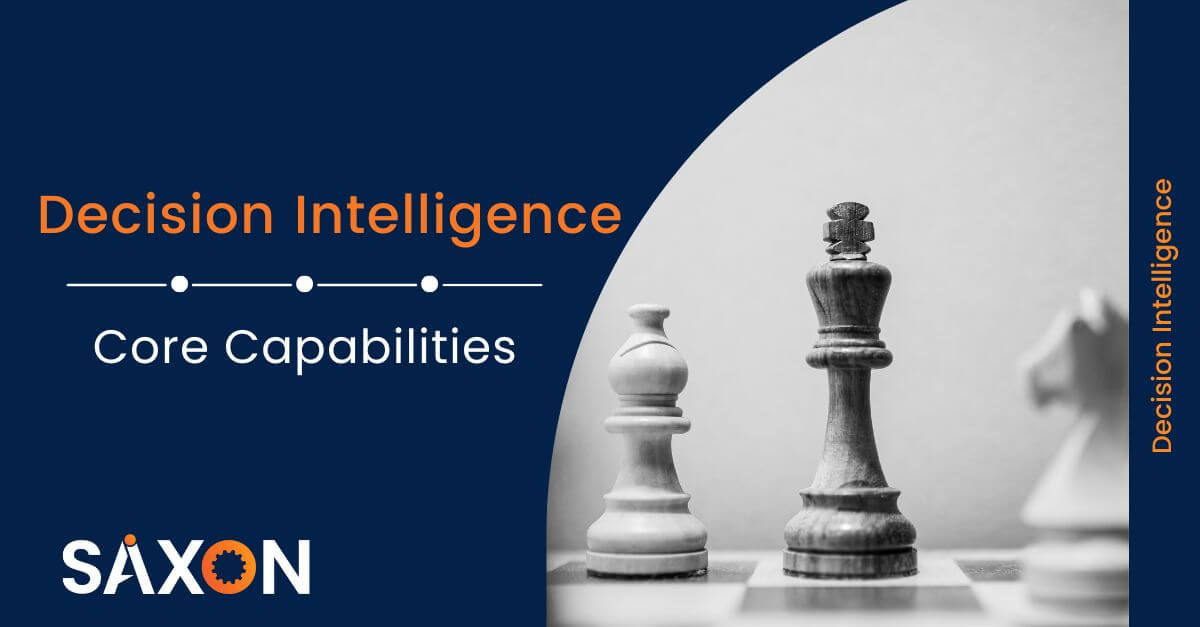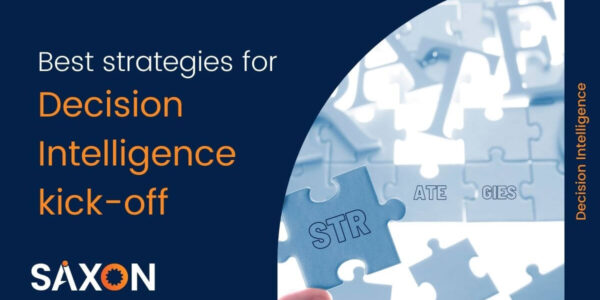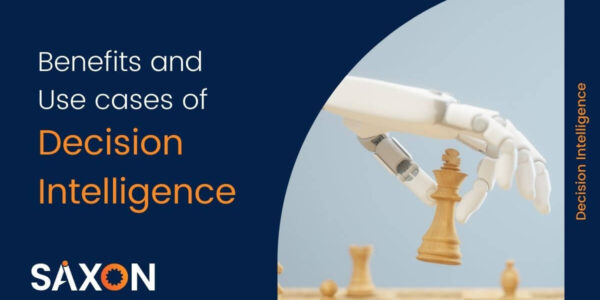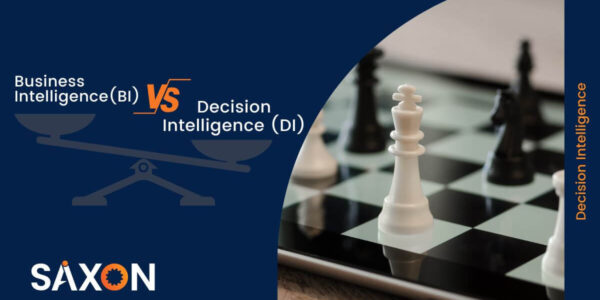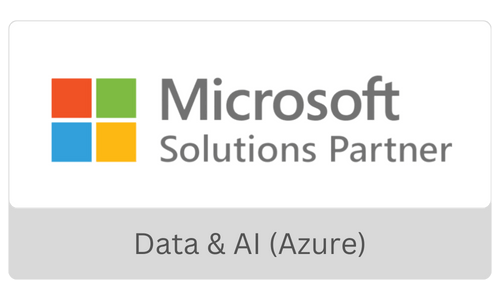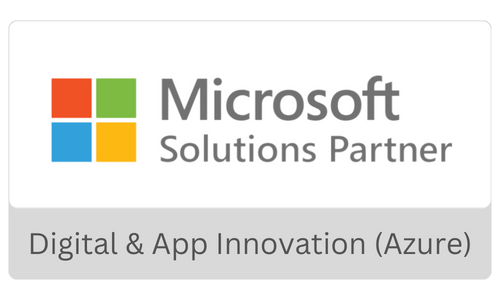Reports show that only 26.5 % of organizations are true data-driven, while for the rest, it still remains an aspiration. It has become a challenging task for businesses today to make data-driven business decisions due to the exponential increase of big data, siloed data, and technological gaps. The common reason being they are not armed with the right technology to get insights bridging data to decisions.
What is this gap? Will decision intelligence bridge this gap?
This increasing gap is between data experts who can analyze big data and business users and analysts seeking insights to make high-quality decisions.
- On the one hand are the data experts like data scientists who use Python, SQL, and TensorFlow to interpret signals from the noise of cloud-native applications, streaming social media, and other real-time data sources.
- On the other hand, domain experts use BI platforms and spreadsheets tools not designed to handle big data workloads.
These users can perform fundamental analysis on aggregated subsets of the indexed, modeled, or parameterized data to reveal patterns and trends in BI dashboards. But they cannot answer the actual questions like “what happened,” “why,” and “how.” This insight requires data analysts to perform labor-intensive SQL slicing and dicing or data scientists to perform advanced analytics. Thus, Insights are still largely handcrafted, and the ML models necessary to get at these are challenging to build, explore, and interpret by the business.
Reports show that only 24% of firms are data-driven, and just 30% of a firm’s employees use analytics/BI tools. The analytical output does not scale with data volumes because the tools, processes, and teams are siloed along the lines of descriptive, diagnostic, and predictive analytics, with time-consuming handoffs and insights gaps. These insight gaps result in inefficiencies, missed opportunities, and increased business risk. Stakes continue to increase for businesses to identify and act on insights, and the gap grows with each additional investment in AI and ML data models.
How can we solve this? What should organizations do to be true data-driven?
The answer is you need Decision Intelligence (DI).
Decision intelligence bridges these gaps and helps users make better, faster, insights-driven decisions at the cloud scale with continuous improvement.
To learn about what decision intelligence is in detail, its use cases and benefits, how DI is different from BI, and the best strategies, we strongly recommend you to check out our previous blogs, so we stay on the same page.
Here, we have crafted the core capabilities of decision intelligence to give you a comprehensive view of how it blurs this increasing and money-draining gap.
What decision intelligence does?
Decision intelligence can support, augment, and automate business decisions by linking data with decisions and outcomes.
By 2030,
- The market worth of decision intelligence is expected to be approximately $36.78 billion.
- Decision Intelligence adoption will provide ML-assisted personalized decisions to most employees.
Furthermore, the scalability of decision intelligence and the use cases covered within decision intelligence will make this the most valuable addition to enterprise analytics environments.”
DI technology can
- assist decisions for humans
- amplify human capability
- handle complexity beyond human cognition
- fundamentally improve the speed, consistency, and impact of decision-making.
This creates significant improvement in efficiency, enabling new capabilities for businesses.
Decision Intelligence core capabilities:
Decision intelligence platforms should simplify the complexity of decision-making by
- translating business questions like why, how, and what (NLQ)
- applying suitable algorithms like statistical, classification, and regression in the most structured way for data in memory or sending queries to where the data resides
- presenting answers to users in an understandable and actionable format using natural language-generated narratives and embedding

Here are the decision intelligence core capabilities,
Connect & model
Organizations should ensure that all the data sources are appropriately linked for easy data access from various data sources, including cloud, on-prem, flat files, third party, and business applications. Organizations can leverage point-and-click pre-built connectors or APIs to connect data sources, thus making intelligent connectivity.
Auto-inferring data models from source systems provide recommendations to create business views within the platform and join the keys to creating sustainable and reusable data models. Data models ensure that consumers can utilize a single trustworthy source and that data creators create analytics outputs from trusted sources.
Data Prep
To make data-driven decisions, you have to blend data, develop metrics, and have the flexibility to add new sources as analysis evolves.
- Point & click prep is a visual interface to blend and clean data with dozens of prebuilt context-specific steps, auto-inferred data models, and suggested joins.
- Code-based prep is In-app Python/SQL data prep support that has a reusable code snippet library and performs automated code validation.
- Visual data pipelines can automatically track all the data prep steps to avoid repetition and maintains accountability.
Search
Natural language query (NLQ) allows any user, regardless of data skills, to flexibly explore and analyze TBs of big data to spot what is happening quickly in natural language.
The search should be
- Highly accessible, so it is easy to use and provides the required search results.
- Robust to search data across locations
- Transparent to have visibility over the SQL generated by the NLQ search and drill down the path navigation to get a detailed view of the filters used.
- Intelligent to accommodate autocompletion, smart indexing, suggestions, and assist search by providing personalized recommendations that it has learned over time from what the user searches.
Automated Insights
Automated insights quicken business decisions, especially when complex data is involved.
A comprehensive decision intelligence platform should possess,
- Cohort Analysis to interpret the reasons for differences between values/cohorts.
- Trend Drivers to issue the cause for differences in metrics/KPI over time.
- Segment Drivers to identify critical drivers with using ML
- Anomalies & Outliers to automatically spot abnormal shifts in business.
AutoML
Machine Learning modeling holds an important place in modern decision-making. Predictive analytics uses automated insights and provides trends/ patterns/future opportunities for the business.
It uses multiple modeling modes like Point & Click ML, AutoML, and code-based ML.
- These models perform regression, classification, time series, and clustering.
- They are business-friendly and provide contextual explanations to users to understand and trust the predictions that power decisions.
Once the insights are extracted, it has to possess a few essential characteristics like
- Shareable.
- Easy-to-understand visualizations like charts with customization.
- Dashboards with drag and drop features.
- Reports with scheduling and share via email, text, etc.
- Automated storytelling with text summaries.
- Embedding APIs and alerts for robust usability.
Monitoring & scalability
For continuous improvement, monitoring and scalability are highly essential.
- In the case of monitoring, the platform is proactive, outliers’ detection, and offers a highly personalized experience to the user.
- For scalability, it is built on a dual analytics engine that can handle sub-second ad hoc requests and ML workloads.
- It is incredibly secure with industry-standard SSO, user and group-level access, and offers impersonation control.
Adopting decision intelligence into your data ecosystem allows you to make high-quality decisions faster and increase your business performance. The quality of the decision is also determined by how faster it is made. Research shows that the faster the decisions, the higher the quality of decisions. When you make faster decisions based on real-time data, you can witness the quantity of impact it makes.
Sounds good? Is this what you are looking for? Why wait? Get on board with us in just a click.

